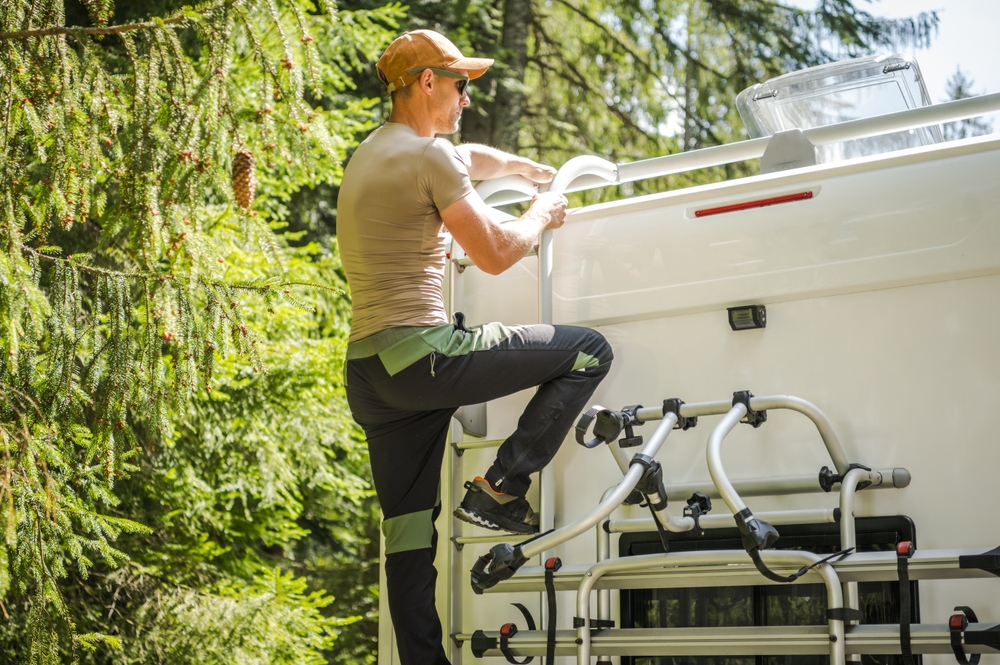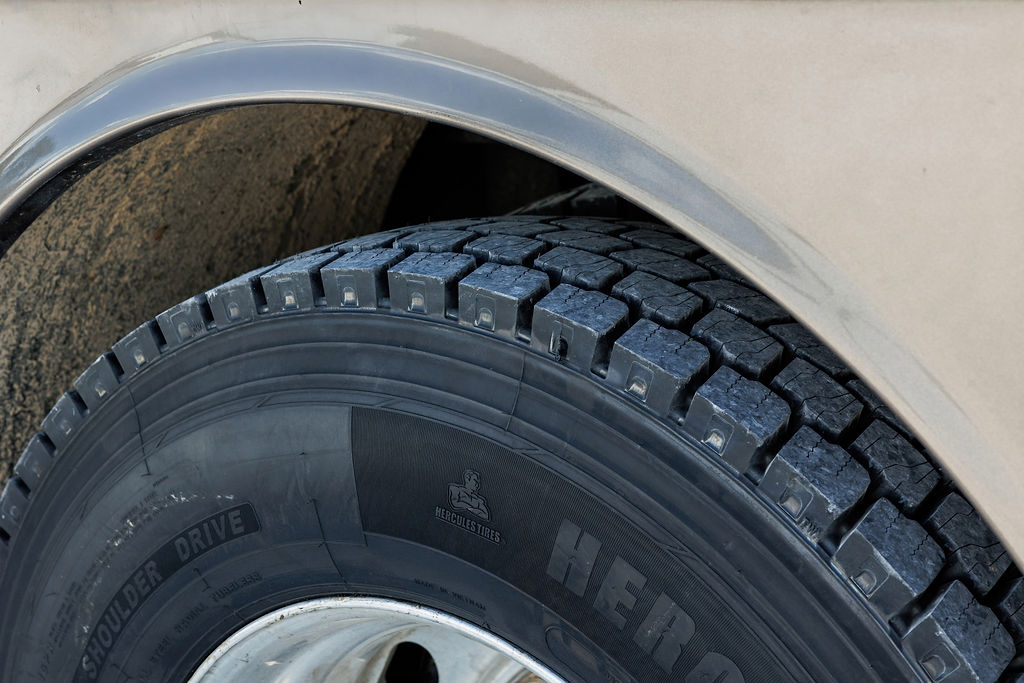
Owning an RV means owning both a vehicle and a home—and that combination makes regular upkeep essential. From tires and brakes to plumbing and electrical systems, your RV has many parts that need attention. Skipping maintenance can lead to expensive repairs, inconvenient breakdowns, and safety hazards.
That’s why we’ve created this comprehensive RV maintenance checklist, based on both industry-standard recommendations and insights from experienced RV service professionals. It's a free downloadable RV maintenance spreadsheet so you can print a physical copy to keep in your rig or track everything digitally.
Scroll to the form at the bottom of this page to download the free RV maintenance spreadsheet.
 Why Use an RV Maintenance Checklist?
Why Use an RV Maintenance Checklist?
RVs combine the complexity of a vehicle with the systems of a small home. Without a system to track upkeep, it’s easy to miss small tasks that prevent big problems. A checklist—or better yet, an RV maintenance spreadsheet—keeps you organized, improves safety, extends your RV’s lifespan, and reduces travel stress so you can focus on the fun parts.
Benefits of following a maintenance checklist or spreadsheet:
Prevent costly repairs by catching issues early.
Increase safety (fewer tire, brake, or propane problems).
Extend lifespan & resale value with documented care.
Travel with confidence knowing your rig is road-ready.
Monthly RV Maintenance (While Using the RV)
Monthly tasks are quick, simple, and help prevent small issues from becoming expensive repairs. Even if you’re on a long trip, taking a few minutes to run through these checks can save you trouble later.
Add RV tank treatment
Use enzyme or chemical treatments in black/gray tanks to break down waste and control odors.
Check tire pressure and refill as needed
Verify PSI—including the spare—before driving. Proper inflation improves handling, fuel economy, and safety.
Check house battery water levels (lead acid only)
Top off with distilled water as needed to maintain capacity and battery health.
Clean air conditioner filters
Remove, rinse, and dry filters to maintain airflow and prevent strain on your A/C system.
 Bi-Annual RV Maintenance (Spring and Fall)
Bi-Annual RV Maintenance (Spring and Fall)
Twice a year, go beyond the basics to clean, lubricate, and exercise components that tend to get ignored.
Inspect and clean rooftop A/C units, including coils
Clear debris, dust, and nests to preserve efficiency and cooling performance. Read more about how to do this in our in-depth guide to RV air conditioner maintenance .
Thoroughly clean RV roof & slide awnings
Wash away dirt and mildew; inspect for rips or worn stitching to prevent leaks.
Clean & lubricate RV toilet bowl seal
Keeps the seal soft and leak-free, reducing odors and water loss.
Clean & lubricate slide-out seals
Minimizes wear, quiets movement, and helps prevent water intrusion.
Run generator for at least 30 minutes while powering appliances
Puts the generator under load, lubricates internal parts, and helps avoid varnish buildup in the fuel system.
Annual RV Maintenance
Annual maintenance is where you’ll catch most potential problems before they lead to major repairs. Even if you travel lightly, time and exposure alone can wear down your RV’s systems.
Exterior & Weatherproofing
Inspect roof and all exterior seams; reseal as needed
Look for cracks, loose sealant, or gaps—early fixes prevent expensive water damage. Be sure to read our detailed guide to RV roof maintenance.
Deep clean holding tanks using a back flush system
Removes buildup and helps sensors read correctly.
Lubricate locks, hinges, and moving components
Reduces corrosion and wear, especially in humid or coastal climates.
Service slide-out mechanisms and lubricate
Lubricate gears/tracks and inspect for alignment or seal wear.
Chassis, Tires & Brakes
Inspect brake system and adjust as needed
Check pads/shoes, rotors/drums, lines, and emergency brake function.
Repack wheel bearings if not sealed units
Recommended frequency is yearly or every 12,000 towable miles.
Inspect tire condition
Look for cracking, bulges, or uneven wear—not just tread depth.
 Plumbing & Water Systems
Plumbing & Water Systems
Sanitize freshwater system
Flush with an RV-safe sanitizing solution; rinse thoroughly.
Replace water filters
Protects taste, odor, and appliance life.
Flush water heater and inspect anode rod
Sediment removal improves efficiency; replace an anode rod that’s more than 75% depleted.
Inspect flexible water lines
Look for abrasion, cracking, or leaks.
Propane & Gas Safety
Test propane regulator and inspect for corrosion
Ensures correct pressure and safe operation.
Inspect flexible propane lines
Look for abrasion, cracking, or leaks.
Test propane system for leaks
Use leak-detecting solution or have a pro perform a pressure test.
 Electrical & Safety
Electrical & Safety
Perform battery maintenance and load testing
Check voltage, connections, and replace aging batteries before they fail.
Test all smoke and carbon monoxide detector and replace batteries.
Manufacturers recommend replacing detectors entirely every 5–10 years.
Test all light bulbs and replace burned-out bulbs as needed
Exterior running and brake lights are critical for safety.
Test all GFCI outlets and replace any that fail
Keeps your RV’s electrical system safe.
Interior & Comfort
Rotate mattresses
Prevents sagging and uneven wear to extend the life of the mattress.
Clean furnace air return filter/vent
Ensures airflow and reduces strain on the blower.
Motorhome-Specific Maintenance
Motorhomes have the added complexity of an engine and drivetrain. Staying on top of these items will help avoid mechanical breakdowns.
Change engine oil & filter
Follow manufacturer mileage/time intervals—whichever comes first.
Check transmission fluid level and condition
Top off or service per the owner’s manual; watch for discoloration or odor.
Inspect brake fluid condition
If fluid is dark or contaminated, change it to protect brake performance.
Run generator under load & service as needed
Many models require periodic oil/air filter changes based on hours used.
 Every 7–10 Years (Annual Inspection Recommended)
Every 7–10 Years (Annual Inspection Recommended)
These are maximum manufacturer or industry-standard replacement intervals. Many RV techs recommend checking or replacing these much more frequently, especially for safety-critical components.
As Yuleyma Sechrest of No Problem RV Services puts it,“RVs are high maintenance as a whole, so the more the RV owner ‘maintains’ the longer the health meter of the RV.”
Replace all safety detectors: LP, smoke, CO
Industry standard: replace every 5–10 years (varies by manufacturer) to ensure accuracy.
Replace RV tires regardless of tread wear
Tire manufacturers recommend replacement at 7 years regardless of how they look due to rubber degradation from age, UV, and load cycling.
Inspect brake system components for replacement
Hoses, calipers, cylinders, and hardware can deteriorate over time even with light use.
Professional propane system certification
Confirms leak-free operation and proper regulator performance.
Professional electrical system safety inspection
Catches loose connections, heat damage, and undersized wiring.
Find a certified RV technician near you to help with these tasks.
Using the RV Maintenance Spreadsheet
Our free downloadable maintenance spreadsheet lets you make notes, track dates and build a service history (handy for resale).
With the spreadsheet you can:
Log completed tasks and next-due dates.
Add notes, part numbers, and receipts.
Share a tidy record with a buyer or service pro.
Fill out the form at the bottom of this page to have the spreadsheet emailed to you.
Tips to Stay on Track
Even the best RV maintenance checklist only works if you follow it. These habits make it easier:
Bundle tasks around the start/end of travel season.
Set reminders (calendar, notes app, or spreadsheet).
Call in a pro for brakes, propane, and other safety items - search RV Help to find a certified RV tech near you.
Document everything with photos and receipts.
Watch for warning signs—new noises, smells, soft spots, or slow slides.
The Payoff
Following a structured RV maintenance checklist takes a little time now but saves a lot of time and money later. With this free RV maintenance spreadsheet, you’ll always know what to do and when—so your next adventure starts without a hitch.
FREE RV Maintenance Checklist Spreadsheet
A printable and editable spreadsheet to help you stay on top of RV maintenance tasks. Organized by frequency, with space to add notes and track completion dates, so you can keep your RV in top condition year-round.
By submitting this form, you'll receive our newsletter and the free download. You can unsubscribe at any time.
FREE RV Maintenance Checklist Spreadsheet
A printable and editable spreadsheet to help you stay on top of RV maintenance tasks. Organized by frequency, with space to add notes and track completion dates, so you can keep your RV in top condition year-round.
By submitting this form, you'll receive our newsletter and the free download. You can unsubscribe at any time.